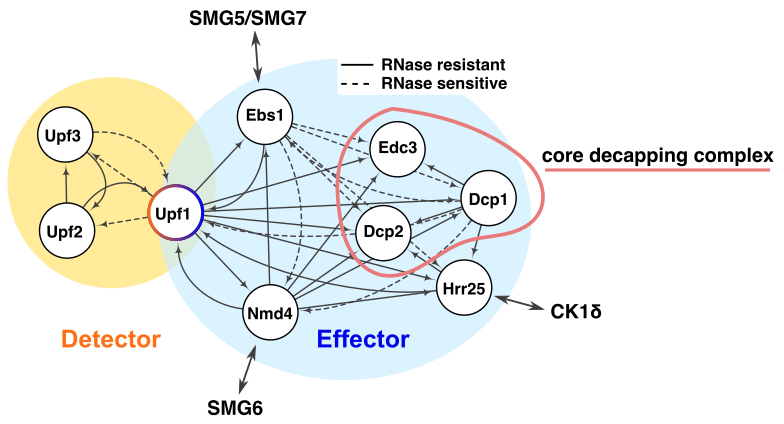About
A site collecting information about research on RNA biology. Further information can be found on my institutional home page with infrequent updates and microblogging on the Fediverse (@cosminribo@framapiaf.org on Mastodon). Source code and some technical tips on data visualization can be found on my Pasteur Institute gitlab page.
I am a scientist working at the Pasteur Institute and interested in the molecular mechanisms that shape gene expression. Most of the tools I have used or built make use of the yeast Saccharomyces cerevisiae, a versatile model organism. My most recent work concentrated on mechanisms and factors involved in nonsense-mediated mRNA decay (NMD), a highly conserved pathway that maintained some of the components over hundreds of millions of years of evolution. I am not sure, but maybe my interest in macromolecules and their interactions has deep roots in my learning years as a teenager, when I found chemistry, and especially molecular structures, fascinating.

Schematics of the interactions that place Upf1, an RNA helicase, at the center of NMD mechanisms and interactions.
While budding yeast has been my "workhorse" until now, other fungal species, such as Cryptococcus neoformans, a major fungal pathogen, are particularly interesting for RNA metabolism. Basidiomycetes, such as C. neoformans, diverged from ascomycetes, such as S. cerevisiae, more than 700 million years ago (Hedges et al., 2004). Unlike S. cerevisiae, in which introns were only retained for about 200 genes (Spingola et al., 1999), C. neoformans genome is rich in introns and retained proteins that were lost in budding yeast, such as those composing the exon-exon junction complex ( Janbon et al., 2014).
I enjoyed working with yeast RNA mechanisms and the involved proteins, but I was also very happy to collaborate with groups working on other organisms and mechanisms, such as bacterial mechanisms of virulence. For example, I identified actin as the eukaryotic target for the exoY P. aeruginosa toxin activation in eukaryotic cells (Belyy et al., 2016), and found that RNAseIII was important for the regulation of gene expression during quorum sensing for S. aureus (Huntzinger et al., 2005).
None of my achievements could have been done without the work of collaborators, especially Laurence Decourty, an amazing colleague with which we worked together on RNA mechanisms in the last 15 years. Abdelkader Namane, who is an expert in mass spectrometry and data analysis, had crucial contributions to many of our projects and I am glad that we could work together. I am grateful to all my former and current Pasteur Institute colleagues for their help and patience.
Web site built using a modified Archie theme for the Hugo static site generator.